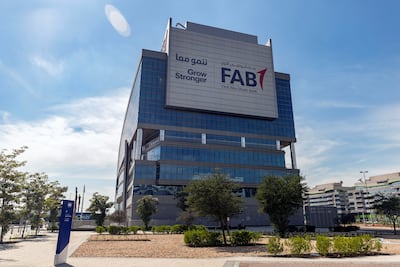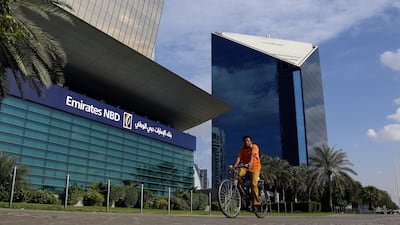Profitability of the four largest banks in the UAE will continue to grow this year amid rising interest rates and the reversal of pandemic-related provisions charges as the Arab world’s second-largest economy continues to maintain strong growth momentum, Moody’s Investors Service has said.
The improving operating environment also supported the profitability of the lenders — First Abu Dhabi Bank, Emirates NBD, Abu Dhabi Commercial Bank and Dubai Islamic Bank — which account for about 77 per cent of banking assets in the UAE, Moody's said in its latest report on the country's banking sector.
The combined reported net profit of the four lenders climbed to $9 billion at the end of last year — up from $8 billion recorded in 2021 and $8.3 billion in 2019. The bottom line growth will continue in 2023, albeit at a slower pace, the rating agency said.
“The combined bottom line profitability of the four banks exceeded pre-pandemic levels in 2022, reflecting strong growth in interest income and normalised provisioning charges,” Nitish Bhojnagarwala, Moody’s vice president and senior credit officer, and analysts Azhar Bouzidi and Badis Shubailat said in the report.
“The recovery reflected greater consumer confidence as macroeconomic conditions improved, driven by rising oil prices and strong activity in non-oil sectors such as trade and tourism.”
Rising interest rates drove higher margins for banks as well as growth in net interest income, which grew by 28 per cent on an annual basis. The reversing interest rate cycle last year also eased pressure on net interest margins.

“As a result, and combined with the banks' funding profile (higher zero or low-cost current and savings account balances), growth in interest income outweighed funding costs, and the banks' combined NIM rose to 2.2 per cent, from 1.8 per cent in 2021,” the report said.
The US Federal Reserve increased its key interest rate on Wednesday by 25 basis points as it continues to push to bring inflation down towards its target range of 2 per cent and restore price stability amid market turmoil fuelled by recent bank failures in the world's largest economy.
This is the ninth rate increase by the US central bank since it started monetary tightening last March, pushing rates 4.2 per cent in the US to their highest since 2007, just before the 2008 financial crisis.
Lenders in the GCC, where most central banks peg their currency to the US dollar, are the beneficiaries of rising interest rates amid the continued economic recovery and relatively lower inflation.
The UAE economy is estimated to have grown by 7.6 per cent last year, the highest growth in 11 years, after expanding 3.9 per cent in 2021, according to the UAE Central Bank. The country’s economy is projected to grow 3.9 per cent in 2023, according to the regulator.
Inflation in the Emirates — stoked by increasing energy prices, imported inflation and rising employment — was projected at 4.9 per cent in 2022, according to the Central Bank's Quarterly Economic Review 2022.
That compares with a global inflation rate of 8.8 per cent last year, according to the International Monetary Fund estimates.

The aggregate non-interest income of the four banks declined by 2 per cent in 2022, which was offset by an increase in lending volumes. Costs last year also grew, but higher income growth improved efficiency levels, with combined cost-to-income ratio of about 31 per cent.
Loan-loss charges declined further in 2022 after peaking in 2020 at the height of the pandemic. Impairment charges for bad loans and advances fell by 9 per cent in 2022 after declining by 29 per cent in 2021. Non-performing loans dropped to 5.3 per cent last year, down from 5.9 per cent a year earlier.
The banks' aggregate cost of risk returned to its pre-pandemic level of 0.8 per cent, reflecting continued economic momentum in the UAE.
“We expect loan loss provisions to stabilise at the current, pre-pandemic level and that the banks' NPL ratio will improve modestly, driving higher coverage over the next 12 to 18 months,” Moody’s analysts said.
Capital ratios for the top-four lenders rose in 2022 and Moody’s expects “stronger profit generation, combined with stable payout ratios, to be sufficient to fund expected modest credit growth of 5 per in 2023, supporting broadly stable capital buffers”.



